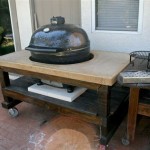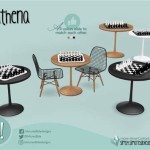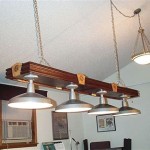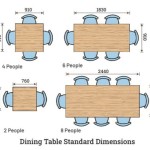Glass Dining Room Table Decorations: Enhancing Elegance and Functionality
Glass dining room tables offer a contemporary and sophisticated aesthetic, making them a popular choice for modern homes. Their transparent nature allows light to pass through, creating a sense of spaciousness and airiness within the dining area. However, decorating a glass dining table requires a thoughtful approach to avoid clutter and maintain its sleek appearance. The key lies in selecting decorations that complement the glass surface, enhance the overall dining room style, and remain functional for everyday use and special occasions.
Many considerations go into choosing the right decorations for a glass dining table. These include the table's shape and size, the existing décor of the dining room, the desired ambiance, and the intended use of the table. The goal is to create a visually appealing and inviting space that reflects personal style while preserving the table's inherent elegance.
Choosing a Centerpiece: A Focal Point of Attraction
The centerpiece is often the first element considered when decorating a glass dining table. It serves as the focal point, drawing the eye and establishing the overall aesthetic theme. Given the transparency of the glass, it is crucial to select a centerpiece that is visually substantial without being overly bulky or obstructing views across the table.
Several options exist for selecting an appropriate centerpiece. A vase filled with fresh flowers or greenery is a classic and versatile choice. The flowers can be chosen to complement the color scheme of the dining room, while greenery adds a touch of nature and freshness. The vase itself should be chosen carefully; clear glass vases echo the table's transparency, while ceramic or metallic vases can provide a contrasting texture and color. Consider the height of the arrangement to avoid blocking conversations or creating a barrier across the table.
Another option is a sculptural object. This could be a single, striking piece of art or a collection of smaller, related objects. The sculpture should be visually interesting and proportional to the size of the table. Materials such as metal, stone, or wood can provide a textural contrast to the glass surface, adding depth and visual interest. When using a collection of objects, arrange them in a pleasing and balanced way, avoiding a cluttered or haphazard appearance.
Candles are another popular choice for centerpieces, particularly for creating a warm and inviting atmosphere. Candelabras offer an elegant and traditional look, while individual candle holders can be arranged in a variety of configurations. Consider using unscented candles to avoid interfering with the aroma of food during meals. The height of the candles should also be taken into account; taller candles can create a dramatic effect, while shorter candles provide a more subtle and intimate ambiance.
For a more minimalist approach, consider a simple bowl filled with decorative elements such as fruit, stones, or shells. This option is particularly well-suited for modern dining rooms with a clean and uncluttered aesthetic. The bowl should be chosen to complement the overall style of the room, and the decorative elements should be carefully selected to create a visually appealing and harmonious arrangement.
Regardless of the chosen centerpiece, it is important to consider its impact on the functionality of the table. The centerpiece should not be so large or obstructive that it interferes with serving dishes or prevents diners from easily conversing. It should also be easy to remove or adjust when necessary, such as during a formal dinner or a casual family meal.
Placemats and Table Runners: Adding Texture and Definition
Placemats and table runners are essential elements for decorating a glass dining table, providing both visual interest and practical protection. They define individual place settings, protect the glass surface from scratches and spills, and add texture and color to the table setting.
When choosing placemats, consider the shape and size of the table, as well as the overall style of the dining room. Rectangular placemats are a classic choice for rectangular tables, while round or oval placemats can be used to soften the angles of a square or rectangular table. Placemats should be large enough to accommodate a dinner plate, cutlery, and glassware, but not so large that they overwhelm the table.
Material is another important consideration. Linen placemats offer a natural and elegant look, while cotton placemats are more casual and easy to care for. Vinyl or cork placemats provide a durable and stain-resistant option for everyday use. Consider using placemats with interesting textures or patterns to add visual interest to the table setting. Woven placemats, for example, can add a rustic and organic feel, while metallic placemats can add a touch of glamour and sophistication.
Table runners are typically placed down the center of the table, providing a focal point and uniting the place settings. They can be used alone or in conjunction with placemats. When using a table runner, ensure it is the appropriate length for the table, allowing it to drape slightly over each end. The color and pattern of the table runner should complement the placemats and the overall décor of the dining room.
Just like placemats, table runners come in a variety of materials, each offering a different aesthetic and level of durability. Silk table runners offer a luxurious and elegant look, while burlap table runners provide a more rustic and casual feel. Consider using a table runner with embroidery, fringe, or other embellishments to add visual interest and texture. If you opt for a patterned table runner, ensure the pattern complements the rest of the dining room rather than clashing with it.
Both placemats and table runners can be changed seasonally or for special occasions. For example, using a red and green table runner and placemats during the Christmas holidays or a pastel-colored set during spring. This allows one to update the look of the dining room without making significant changes to the overall décor.
Functional Decorations: Combining Beauty and Utility
Beyond centerpieces, placemats, and table runners, several other functional decorations can enhance the dining room table's appeal while serving a practical purpose. These include items like coasters, napkin rings, and serving dishes.
Coasters are essential for protecting the glass table surface from water rings and heat damage. Choose coasters that complement the overall style of the dining room and provide adequate protection for the table. Options include coasters made from cork, leather, stone, or metal. Consider using coasters with interesting designs or patterns to add a touch of personality to the table setting.
Napkin rings not only hold napkins in place but also add a touch of elegance and sophistication to the table setting. They come in a variety of materials, styles, and finishes, allowing one to coordinate them with the placemats, table runner, and other decorations. Simple metal napkin rings offer a clean and modern look, while more elaborate napkin rings with embellishments or decorative elements can add a touch of glamour. Consider using napkin rings that reflect the theme of a holiday or special occasion.
Serving dishes and platters can also be used as decorative elements, particularly when not in use for serving food. A beautiful bowl filled with fruit or a decorative platter displaying candles or flowers can add visual interest to the table. Choose serving dishes that complement the overall style of the dining room and are made from materials that coordinate with the other decorations. Consider using serving dishes with interesting shapes, patterns, or textures to add visual interest.
Another functional decoration is a glass carafe filled with water or juice. This adds a touch of elegance to the table and provides a convenient way to serve beverages. Choose a carafe that is both stylish and functional, with a shape and size that complements the table setting. Consider using a carafe with a lid to keep beverages fresh and prevent spills.
The key to using functional decorations effectively is to choose items that are both visually appealing and practical. The decorations should enhance the overall aesthetic of the dining room while serving a useful purpose. Avoid cluttering the table with too many decorations, and ensure that all items are well-maintained and clean.
Ultimately, decorating a glass dining room table is about striking a balance between aesthetics and function. By carefully selecting decorations that complement the table's inherent elegance and enhance the overall dining room style, it is possible to create a welcoming and stylish space for everyday use and special occasions. The transparent nature of the glass provides a blank canvas, allowing for creativity and personalization in decorating the dining area.

French Round Dining Room Table Decorating Ideas

Adorable Dining Space Glass Room Table Top Rectangle

15 Round Glass Dining Room Tables That Add Sophistication To Mealtime

64 Attractive Farmhouse Table Decorations Ideas Romantic Home Decor Dining Room Design

Dining Table Glass Design Ideas For Your Living Room

Stacked Lucite And Glass Dining Table Park Eighth

A Bright And Beautiful Kitchen Dining Area In Property Fulham London We Love Using Glass Room Table Decor

40 Glass Dining Room Tables To Revamp With From Rectangle Square

Chrome Glass Top Dining Table Set For Affordable Home Furniture Decor Outdoors And More

Glass Top Table 7 Rectangle Ideas For Home








